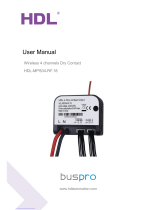
4
ww w. cade nce. com
PA LLADI UM XP V ERI FI CATI ON CO MP UTI NG PLATF ORM
• Better design bring-up predictability
– Enables quick bring-up with its fast, automated, intelligent compiler that includes a rich set of
behavior construct support and congruent (match) behavior between simulation and hardware
– Boosts runtime predictability with “hot-swap” to acceleration or emulation and the most flexible
use models
– Enables quick system-level bring-up with comprehensive and proven Cadence SpeedBridge
®
portfolio
(comprising hardware rate adapters for external targets)
• Platform extension
– Supports metric-driven verification for acceleration with coverage and advancements in hardware
verification/hardware design languages
– Supports the most comprehensive hard or soft verification IP for standard protocols
– Enhances system-level low-power analysis with Dynamic Power Analysis option and power verification
techniques such as power shutoff
PALLADIUM XP FEATURES
COMPREHENSIVE VERIFICATION COMPUTING PLATFORM
The Palladium XP verification computing platform is state-of-the art for its advancements in hardware,
software (compilation, debug, runtime, flexibility), and use models. The Palladium XP compute engine
comprises an advanced custom processor grid. Each processor includes multi-million transistors embedded
in multi-chip modules (MCMs). This processor grid allows Palladium XP to support up to 2 billion ASIC
gates of design capacity, supporting a single user or up to 512 simultaneous users, and it runs up to
4MHz. Its unique architecture enables high-performance verification for both small and large designs.
Engineers can run their hardware and software verification tasks in parallel with cycle-accurate models
while effortlessly migrating from a simulation environment to an acceleration/emulation environment.
The Unified Xccelerator Emulator (UXE) software component of Palladium XP integrates simulation and
acceleration in a single environment, thereby enabling fast bring-up, superior debug, hot-swap capability,
and fast, fully automated, predictable design compile on a single workstation. It is designed to support a
large subset of behavioral RTL and enables efficient debug, thus increasing verification throughput and
flexibility. For ease-of-use, UXE software makes the first-time user experience very similar to that of the
simulation environment but with the speed of emulation.
FLEXIBLE RESOURCE ALLOCATION
Palladium XP offers verification computing resources with best-in class flexibility for an enterprise. It can
be utilized for multiple projects/tests as it can support multiple concurrent jobs—including those with a
mixture of acceleration and emulation—without affecting other jobs. Users can set up jobs queuing for
regression or interactive use and can relocate jobs to other available symmetrically configured resources
(MCMs, memories, I/Os) without re-compilation. Furthermore, users can respond to on-demand resource
allocation requirements as projects needs evolve. Palladium XP offers the flexibility to make tradeoffs
between maximizing runtime performance or maximizing capacity and the number of users.
FLEXIBLE MODEL SUPPORT
To assemble the SoC rapidly, at any given design phase, teams need to utilize the most accurate and
highest performing models available. Therefore, a highly flexible verification platform is critical. The
Palladium XP platform allows rapid integration of various abstracted IP models on the basis of perfor-
mance, accuracy, availability, reuse, hard/soft IP, or legacy environment support requirements.



















